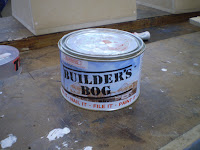Thursday, November 25, 2010
Thursday, November 18, 2010
problems encountered
Having one speaker looking slightly different to the other (one is a little bigger than the other).
Some of my wires were a bit short so I had to solder another wire onto the shorter ones so they would reach the woofer and tweeter.
I had some trouble of where to put the terminal. The first place I put it was a bit tricky to reach to get the wires through the holes. So I had to drill two more holes on the opposite side so that I could get the wires through to the terminal.
Uneven sanding which left a few bump on my speakers.
making the speaker
Wednesday, November 17, 2010
Subscribe to:
Comments (Atom)







































































